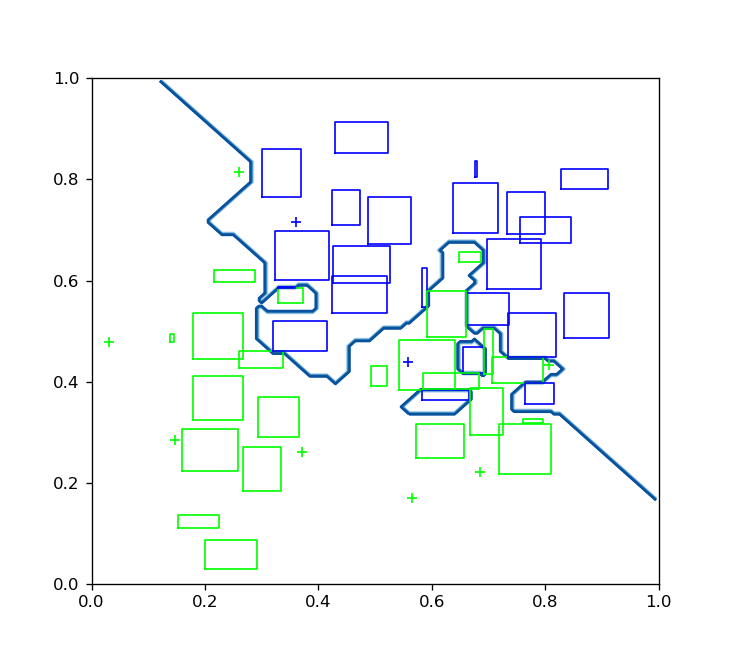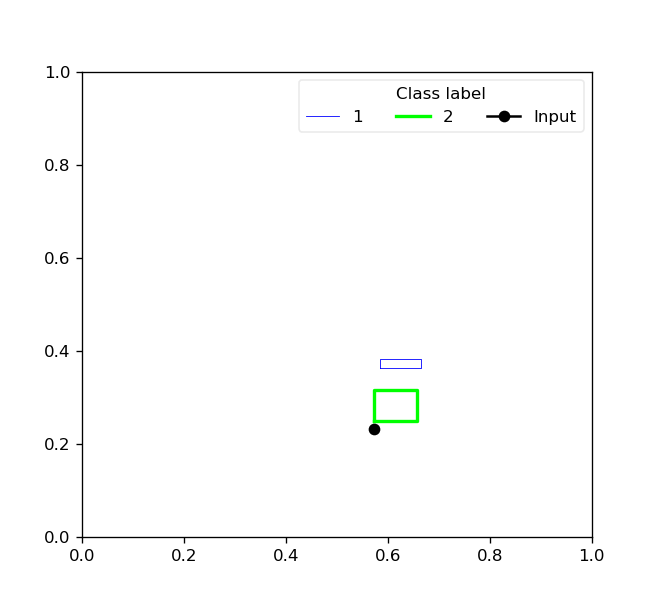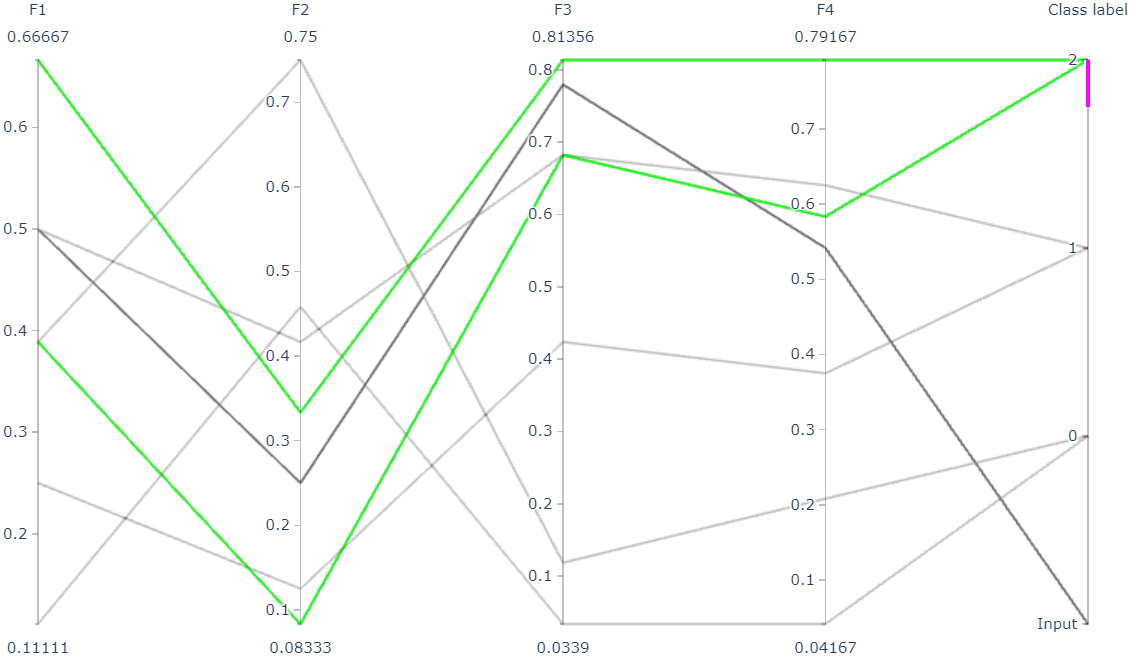Showing hyperboxes and decision boundaries For two-dimensional training data, the hyperbox-brain provides the visualisation of hyperboxes and their decision boundaries on a two-dimensional plane.

Showing hyperboxes and decision boundaries For two-dimensional training data, the hyperbox-brain provides the visualisation of hyperboxes and their decision boundaries on a two-dimensional plane.

Explanation for 2D samples For two-dimensional data, the hyperbox-brain toolbox can explain the reason behind the class prediction for each input sample by showing representative hyperboxes for each class which join the prediction process of the trained model for an given input pattern as follows:

Explanation for n-D samples For samples with two or more dimensions, the hyperbox-brain toolbox can explain the reason behind the class prediction for each input sample by using a parallel coordinates graph to display representative hyperboxes for each class which join the prediction process of the trained model for an given input pattern as follows:


T. T. Khuat and B. Gabrys (2023), "Hyperbox-brain: A Python ToolBox for Hyperbox-based Machine Learning," SoftwareX, vol. 23, pp. 101425